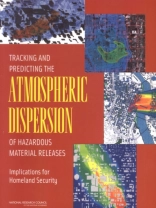For many years, communities have prepared themselves to deal with accidental atmospheric releases from industrial sites, energy facilities, and vehicles transporting hazardous materials. Today, these communities must also worry about the terrorist threat of the intentional use of chemical, biological, and nuclear (C/B/N) agents. Because of this threat, the ability to predict and track the dispersal of harmful agents has become a critical element of terrorism planning and response.Our nation’s capacity to respond to atmospheric C/B/N events stands, like a three legged stool, on the strength of three interconnected elements: 1) dispersion models that predict the path and spread of the hazardous agent; 2) observations of the hazardous plume itself and of local meteorological conditions, which provide critical input for the models; and 3) interaction with emergency responders who use the information provided by the models.As part of the National Academies continuing focus on issues of homeland security, Tracking and Predicting the Atmospheric Dispersion of Hazardous Material Releases examines our nation’s current capabilities in these three areas and provides recommendations for strengthening them.
Board on Atmospheric Sciences and Climate & Committee on the Atmospheric Dispersion of Hazardous Material Releases
Tracking and Predicting the Atmospheric Dispersion of Hazardous Material Releases [PDF ebook]
Implications for Homeland Security
Tracking and Predicting the Atmospheric Dispersion of Hazardous Material Releases [PDF ebook]
Implications for Homeland Security
Köp den här e-boken och få 1 till GRATIS!
Språk Engelska ● Formatera PDF ● Sidor 113 ● ISBN 9780309525671 ● Utgivare National Academies Press ● Publicerad 2003 ● Nedladdningsbara 3 gånger ● Valuta EUR ● ID 7146450 ● Kopieringsskydd Adobe DRM
Kräver en DRM-kapabel e-läsare












